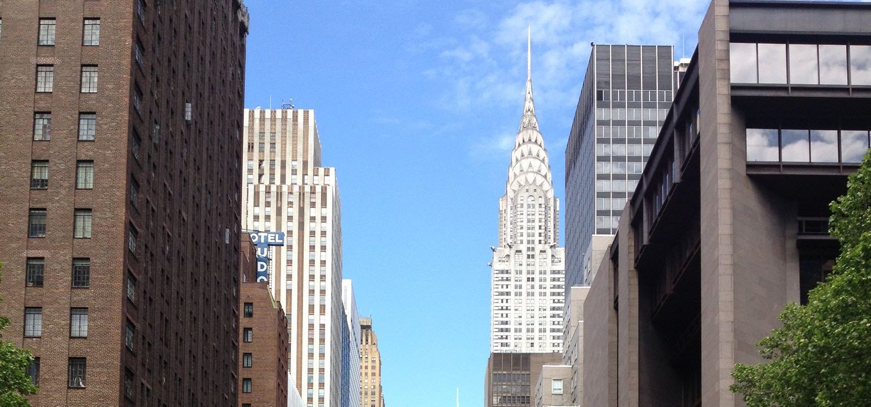If the correct stainless steel is selected and properly maintained, it will last the life of the project

Stainless steel is playing an important role in sustainable design and alternative energy evolution. Ultimately, the most environmentally friendly materials are corrosion resistant and durable, have high-recycled content and recapture rates, provide long service life and reduce resource use. Stainless steel provides all of these benefits. If the correct stainless steel is selected and properly maintained, it will last the life of the project.
Stainless steel is 100% recyclable into the same product with no reduction in quality.
Both the U.S. and Canadian Green Building Councils recognize the environmental benefits of using high-recycled content materials and their respective LEED (Leadership in Energy & Environmental Design) Green Building Rating Systems™ award points for their use. Stainless steel is 100% recyclable into the same product with no reduction in quality. The metal’s high scrap value and recyclability ensures that it is diverted from landfills and recaptured for use in new stainless steel.
The stainless steel producing members of the Specialty Steel Industry of North America have indicated that the average recycled content of the 300 series stainless steel grades that are used in the architecture, building and construction market is approximately 75 to 85%. On average the recycled content of stainless steel is 60%. In North America and other parts of the world, which have historically used more stainless steel, recycled contents can be higher.
The above clip – Stainless steel: Recycled for lasting value – provides more information on stainless steel’s recycled content and high recapture rate.
At the EOL, stainless steel is recaptured and recycled into new metal at amazingly high rates.
Specifiers have become increasingly aware that truly sustainable materials should not only meet the intended design life requirements but should also be recaptured at the end-of life (EOL) and either reused or recycled into new high quality products. The least sustainable materials are burned to produce energy or sent to landfills after service, which depletes natural resources.
At the EOL, stainless steel is recaptured and recycled into new metal at amazingly high rates. Researchers at the Center for Industrial Ecology, Yale University, New Haven, CT, and the National Institute for Environmental Studies, Tsukuba, Japan completed an in-depth study of the international life cycle of stainless steel, including the typical service life and EOL recapture rates by application.
In the industrial equipment and the building and infrastructure segments, 92% of stainless steel is captured at the EOL for use in new stainless or carbon steel. The EOL recapture rates for other common applications are as follows: transportation, 87%; household appliances and electronics, 70%; and other metal goods, 60%.
Researchers also noted that EOL recycling rates for stainless steel increased by 6.1% between 2000 and 2005. They have published their findings in the article “Global Stainless Steel Cycle Exemplifies China’s Rise to Metal Dominance“, Environmental Science & Technology Magazine, April 2010.
LCI data on stainless steel are available through the DOE National Renewable Energy Laboratory (NREL), and can be accessed as follows:
(1) Go to http://www.nrel.gov/lci/
(2) Click on the database link on the left-hand side of the screen (this may require signing up for a free account)
(3) In the database, click on the category “Primary Metal Manufacturing”
(4) The stainless steel datasets are called “Steel, stainless 304, flat rolled coil”; “Steel, stainless 304, quarto plate”; and “Steel, stainless 304, scrap.”
The LCI data may be used for LEED and other green building programs.
Stainless steel is used to store and transport potable water to minimize loss to the environment and to clean wastewater.

Stainless steel’s role in resource conservation is not limited to its high-recycled content and reuse rate. It plays an important role in the production of alternative energy equipment and the generation of solar, biomass to energy, nuclear, geothermal, and wave power. Air scrubbing systems made from stainless steel are also making existing energy production technologies cleaner.
Stainless steel is used to store and transport potable water to minimize loss to the environment and to clean wastewater. Its extensive use in large public water and sewerage treatment facilities is well known, but it is also increasingly being used for small on-site water storage, treatment or filtration units. These small units clean building waste and grey water, so that potable water consumption is reduced. They are ideally combined with low run-off stainless steel roofs and drainage systems to maximize the capture and use of non-potable water sources and to minimize the structure’s overall environmental impact.
The high Solar Reflective Index (SRI) value of most bare stainless steel surfaces is high enough to reflect away and dissipate heat so that air conditioning requirements are reduced when it is used for high slope roofing, wall and sunscreen panels. Furthermore, this performance is not reliant on a coating that must be reapplied and the finish will not deteriorate over time if an appropriate corrosion resistant stainless steel is selected.
Stainless steel is also a sustainable choice for interior building surface applications because it produces no VOC emissions.

Although stainless steel only became available to designers in the mid-1920’s, it has had a tremendous impact on international design. Stainless steel has provided up to 80 years of service in high profile architecture projects without appearance deterioration or metal replacement. When properly selected, fabricated, and maintained, it should last the life of the structure, even if that life extends over centuries.
Building evaluation methods, like those developed by the World Green Building Council member countries encourage designers to ask questions about the potential environmental impact of construction materials. Material comparisons frequently include data on recycled content, potential for product reuse, durability, maintenance requirements, impact on energy and water consumption, and influence on indoor air quality and light. When these analyses are done, stainless steel is consistently one of the most environmentally friendly metals commonly used in construction.
Stainless steel is an ideal choice for exterior building applications. It has been used for many LEED rated buildings around the world that were designed for 50 or 100 year service.
Stainless steel is also a sustainable choice for interior building surface applications because it produces no VOC emissions. This makes it ideal for buildings where control of the interior air quality is critical, such as museums, laboratories, archives, medical facilities, and it is also ideal for any structure where low air volatile organic compound (VOC) levels are desired. When buildings require careful air quality control, stainless steel ductwork is specified, because it can be thoroughly steam sanitized and duct wall perforation due to corrosion in coastal and other corrosive environments is unlikely.
It is also widely used for transit and other public building interiors where a high level of scratch and impact resistance and excellent clean-ability are required. These same characteristics also make it ideal for public restrooms and kitchens. Cleaning stainless steel requires no environmentally hazardous or dangerous chemicals.
There are many decorative and structural interior applications for stainless steel including slip resistant flooring, built in furniture, column covers and railings. These products can be obtained with a broad range of decorative finishes that produce no VOC emissions. Reflective stainless steel interior panels are used around skylights and on other interior surfaces to bring natural light into buildings.